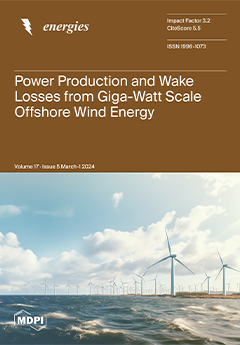The main purpose of this investigation was to explore the heat transfer and flow characteristics of aero-foil-shaped fins combined with extended jet holes, specifically focusing on their feasibility in cooling turbine blades. In this study, a comprehensive investigation was carried out by applying impinging jet array cooling (
IJAC) on a semi-circular curved surface, which was roughened using aerofoil-shaped fins. Numerical computations were conducted under three different Reynolds numbers (
Re) ranging from 5000 to 25,000, while nozzle-to-target surface spacings (
S/
d) ranged from 0.5 to 8.0. Furthermore, an assessment was made of the impact of different fin arrangements, single-row (
L1), double-row (
L2), and triple-row (
L3), on convective heat transfer. Detailed examinations were performed on area-averaged and local Nusselt (
Nu) numbers, flow properties, and the thermal performance criterion (
TPC) on finned and smooth target surfaces. The study’s results revealed that the use of aerofoil-shaped fins and the reduction in
S/
d, along with surface roughening, led to significant increases in the local and area-averaged
Nu numbers compared to the conventional
IJAC scheme. The most notable heat transfer enhancement was observed at
S/
d = 0.5 utilizing extended jets and the surface design incorporating aerofoil-shaped fins. Under these specific conditions, the maximum heat transfer enhancement reached 52.81%. Moreover, the investigation also demonstrated that the highest
TPC on the finned surface was achieved when
S/
d = 2.0 for
L2 at
Re = 25,000, resulting in a
TPC value of 1.12. Furthermore, reducing
S/
d and mounting aerofoil-shaped fins on the surface yielded a more uniform heat transfer distribution on the relevant surface than
IJAC with a smooth surface, ensuring a relatively more uniform heat transfer distribution to minimize the risk of localized overheating.
Full article





